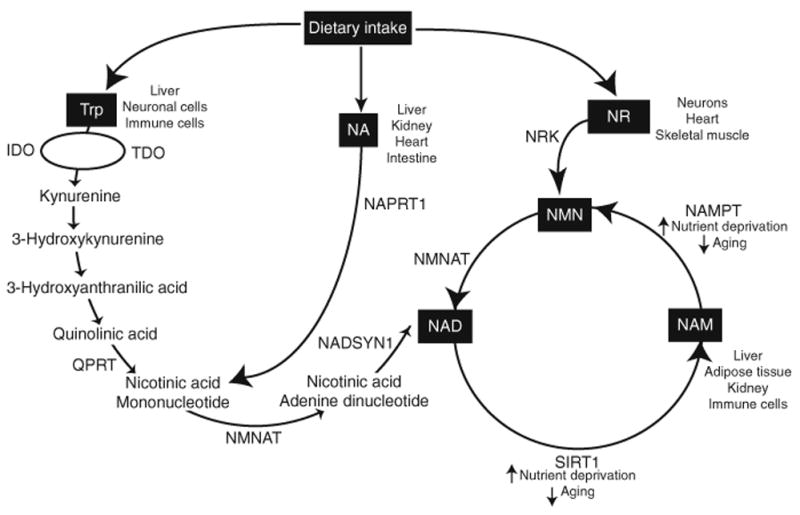Fig. 4.

Pathways of mammalian NAD biosynthesis. Four dietary metabolites can be used to generate NAD: tryptophan (Trp), nicotinamide (NAM), nicotinic acid (NA), and nicotinamide riboside (NR). De novo NAD biosynthesis occurs from Trp via the eight-step Kynurenine pathway. The first and rate-limiting step in this pathway is shared by tryptophan dioxygenase (TDO) and indoleamine-2,3-dioxygenase (IDO), with TDO acting in the liver and the brain and IDO acting in the immune system. NA generates NAD through the Preiss–Handler pathway (PHP). In this pathway, nicotinic acid phosphoribosyltransferase (NAPRT1) forms nicotinic acid mononucleotide (NaMN), which is converted to NAD by the sequential actions of glutamine-dependent NAD synthetase (NADSYN1) and Nmnat. In the salvage pathway, homodimeric nicotinamide phosphoribosyltransferase (NAMPT) converts NAM to nicotinamide mononucleotide (NMN) and nicotinamide nucleotide adenylyltransferase (Nmnat) converts NMN to NAD. NR generates NAD by way of nicotinamide riboside kinase (Nrk) or purine nucleoside phosphorylase (Pnp) and nicotinamide salvage
